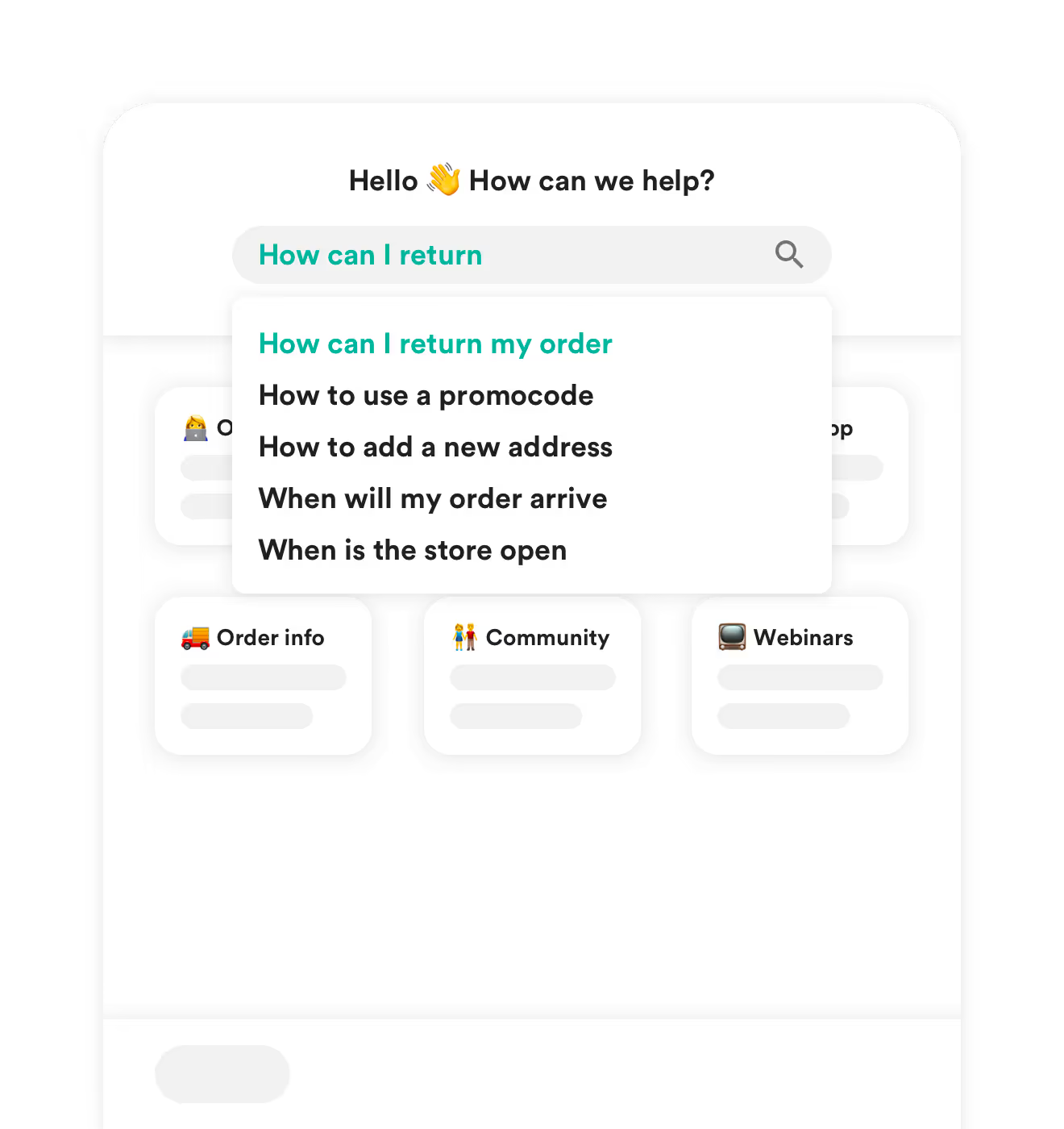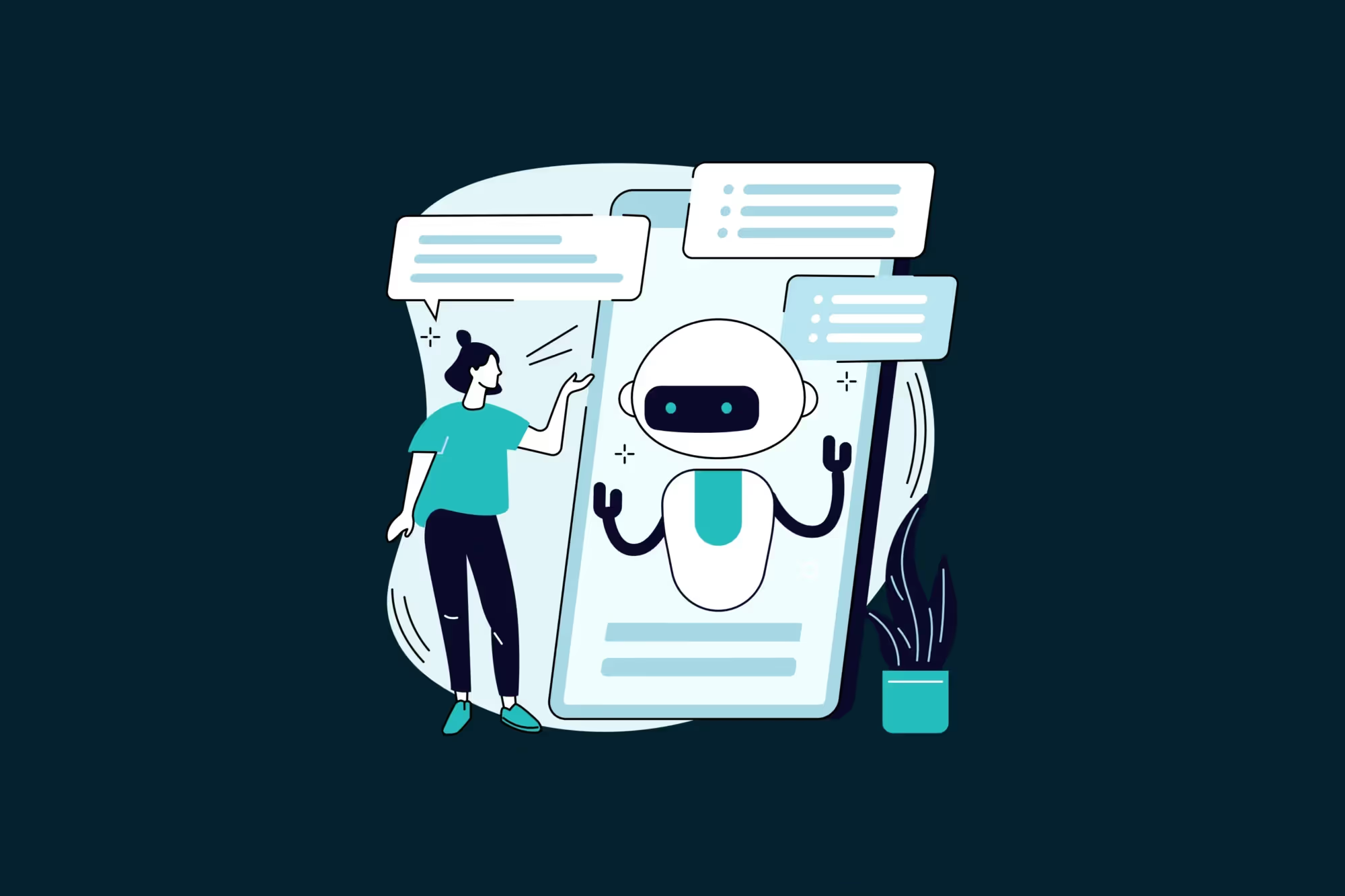If we go back a few years — call centers were the height of customer service. It’s a place where you could call a business and hear a ‘not so lovely’ automated voice prompt trying to get enough information from you before passing you to support agents.
Fast forward to today, and you’ve got customers contacting support teams using a variety of channels such as WhatsApp, SMS, live chat, self-service, and a whole lot more.
However, here’s the problem; there’s a limit to the number of customer inquiries your support team can handle at a time. And when customers find it difficult to resolve their issues, you start losing credibility and brand loyalty.
For context, look at these stats:
- 65% of customers will change brands because of one bad customer service experience.
- It takes 12 positive customer experiences to make up for 1 negative experience.
- 13% of customers tell 15 or more people if they have a negative experience.
Now, amid all this chaos comes a customer service automation software. A solution that helps streamline your entire support operations.
But there are still a series of questions left unanswered.
How do you find the right solution? How do you know if it’s a fit for your business? How well does it integrate with your existing system? What’s your budget and business model?
All these and many more are what we’ll cover in this article. But first, let’s answer the bugging question—
What is customer service automation software?
Customer service automation software is a type of software that helps customers resolve their issues and inquiries without interacting with support agents.
At first, this may sound illogical and perhaps contradict the idea behind “customer service.” But automating customer service works for your business — rather than against it.
This is because customer service automation software assists your support agents in handling meager and repetitive tasks such as:
- Common inquiries and questions via knowledge base
- Conversation management
- Omnichannel customer interaction
- Order tracking
- Appointment scheduling
- Problem resolution tracking across all channels
- Customer reporting and analysis
For example, it can help you automate the managing of customer conversations by directing them to the right support agent in the appropriate department.
💡Pro Tip → Use ‘rules’ on Trengo to automate assigning customer conversations to the appropriate team member.
How does customer service automation software work?
The premise of every customer service automation software is to handle customer queries. However, to do this, it has to identify the problem and recommend solutions either via redirecting to an actual support agent or sending relevant resources.
Meanwhile, this seamless experience between your business and customers can’t work without some core features like:
- Auto replies & Quick replies: This is an automatic response system that provides fast and accurate replies or solutions to common customer inquiries or issues.
- Self-service tools: This helps customers navigate the solutions to their issues without needing to call support. A few examples of these tools include FAQ sections, chatbots, knowledge bases, and community portals.
- Rules: Rules automate repetitive tasks such as assigning an incoming message to one of your customer service agents.
- Chatbots: A chatbot can answer frequently asked questions and route customers to the right agent. Even outside of business hours.
For example, if we breakdown a chatbot in a customer service automation software, here’s how it works:
- First, the chatbot uses a combination of machine learning, NLP (natural language processing), and AI (artificial intelligence) to understand the intent of the customer’s inquiry in order to respond accordingly. Often, this is done by analyzing the keywords in the customer’s inquiries.
- Next, depending on the configuration, a chatbot can simulate real human conversations or provide instant answers based on preset dialogues.
- If the customer inquiries supersede the software’s capabilities, it’ll notify the appropriate support agent(s).
Here’s an example:
Suppose a customer reaches out to the support team about a possibly defective product.
- E.g., “... my fan isn’t rolling”
Once the chatbot analyzes the intent of the inquiry, it can choose to recommend appropriate solutions. For instance, this could be a video walkthrough tailored specifically to the problem.
Ideally, if all the support channels are fully integrated into an omnichannel system, the software will send a canned response once the customer sends the email. This is to inform them that their inquiry has been received, and a support agent will contact them shortly.
Finally, once the support agent picks up the conversation, they can see the dialogue between the chatbot and the customer. With this, they can easily recommend a solution without restarting the customer's conversation.
Related → 5 inspiring omnichannel customer service examples
What are the benefits of customer service automation software?
The end goal of automating customer service is to improve the overall experience of customers across all support channels.
Increased cost savings
One of the most unattractive parts of a customer service job is doing the same task multiple times. Over time, this becomes boring, time-consuming, and worse — impedes the productivity of the support team.
However, by automating these repetitive tasks, such as routing customer queries, and handling FAQs, you can reduce the cost of hiring extra manual labour. This way, your customer support team can focus on handling more complex and value-adding tasks.
Additionally, in recent research by Juniper, the adoption of features like chatbots can save businesses worldwide around $11 billion per year — and over 2.5 billion customer service hours.
Constant availability (24/7 support system)
82% of customers want an immediate response (~10 mins) when they have an inquiry.
While these stats show that delivering customer support round the clock is good for customer retention, it’s not always practical for most businesses. For many, hiring and training new support agents is costly.
In this case, opting for customer service automation software is the best option. This is because a standby support system is in place to handle customer-related issues at any time of the day.
For example, if a customer reaches out to support at 2 am, chances are, most — or all support agents will be unavailable. However, with features like self-service portals, chatbots, and live chat, the customer could easily find a solution to their problem.
In addition, providing 24/7 customer support can help businesses improve their customer experience and brand loyalty.
💡Pro Tip → Build a Help Center to create a personalized knowledge base that lets customers control their experience and find solutions individually.

Better data management
It’s not uncommon to see customer service representatives make mistakes when managing customer data. Often, this can be due to a lack of proper organizing and analyzing of customer data to make informed decisions. Hence, leading to siloed interactions or inaccurate responses between support agents and customers.
Unfortunately, these are no “small mistakes or errors” as they can cost the business to lose its customers and brand loyalty.
Luckily, automating your customer service helps you solve this problem in two ways:
- It helps centralize your data storage: You can easily store all previous interactions and support conversations in a centralized location. This way, your customer support team can easily access the information to provide better-informed responses.
- It helps improve your data analysis: With customer service automation software, you can track satisfaction levels, customer feedback, and support trends. With this information, it’s easier to identify areas of opportunities and improvement in your customer support systems and your product.
💡[Case study] →Read how Toyota Material Handling uses Trengo to manage 180 mechanics
How to determine your customer service automation needs
Buying software to automate your customer service needs is the easiest part — *swipes credit card*. However, finding the right fit for your business is the hardest — and often neglected part.
Sadly, picking the wrong automation software will cost you customers, time, and resources.
To ensure you’re investing in the right technology and processes to improve your customer support operations, follow these three steps below:
Evaluate your current support processes
Start by identifying areas where your support system is lacking — or needs improvement.
This involves taking a closer look at areas such as:
- Response times
- What are the average response times for customer queries?
- How do they compare with industry standards?
- What are customers' reactions/satisfaction levels during certain response times?
- The pattern of customer inquiries.
- What are the most common inquiries?
- How often do these inquiries get solved?
- What time do you receive the most inquiries from customers?
- What are the inquiries often related to? Technical difficulties or billing issues?
- Channels used.
- What channels do you receive the most inquiries from?
- How many customer support channels do you have?
- Via what channels do your customers get most of their issues resolved?
- Staff workload.
- How many customers do your support agents interact with at a time?
- What tasks are repetitive and time-consuming?
- What’s the ratio of your support agents to customer inquiries?
- What’s the average time it takes support agents to resolve a customer’s issue?
By evaluating this process, you can nitpick areas needing automation to reduce response times and increase customer satisfaction.
💡Pro Tip → You can use Trengo to unify all your support channels, including WhatsApp Business, Instagram, Google’s Business Messages, email, live chat, etc. Try Trengo now! 👈
Identify your business type
There are mainly two types of businesses; small businesses and large enterprises. Both of these businesses have different needs for automating customer service.
For small businesses, limited resources such as staff and budget play a major role in determining your buying decisions. As such, your ideal customer service solution needs to be cost-effective and efficient.
Also, as a small business, personalization would likely be a priority for your business. Therefore, you’ll need a solution that blends the mix of personalized interactions and a human touch.
Meanwhile, for large enterprises, scalability is of the utmost importance across the board. So, your go-to solution should be customer service automation software that can handle large-scale customer inquiries and continuously scale to meet your needs.
Additionally, due to the complexity of the systems in large enterprises, your preferred solution should be able to integrate your existing systems and processes.
Define your KPIs and objectives
Your customer service automation software should closely align with your intended KPIs and objectives so as to ensure the success of your automation efforts. In a nutshell,— it should be able to do the job.
For example, say your goal is to reduce response times and improve customer satisfaction. Your target KPIs may include metrics such as average response time, customer satisfaction rate, and the number of customer inquiries resolved.
Therefore, your preferred customer service automation solution should be able to capture this data, analyze the result, and produce actionable insights that optimize your support process.
For example, with Trengo, you can stay up-to-date on crucial customer service metrics across all your support channels — all from one single dashboard.

Related → 3 customer service metrics to nail in 2023
What are the key features of customer service automation software?
Once you’ve figured out your needs, the next thing you should do is to compare the available features of each of the solutions you’re considering.
Ideally, your solution should be able to:
- Profile customers based on intent and history of interaction, e.g., previous inquiries, shopping records, etc.
- Unify all support channels in a centralized system for all interactions with customers
- Organize and secure customer data for easy accessibility
To make your search easier, we’ve narrowed down the top six (6) features to expect from customer service automation software.
Shared inbox
A shared inbox or ‘team inbox’ allows multiple support agents to access incoming customer inquiries from one inbox. With this, your team won’t have to constantly juggle multiple inboxes when communicating with customers.
Related → How to manage shared inbox like a pro
Native integrations
Native integration enables the seamless connection of other tools and systems used by your business. This includes streamlining the workflow between your business and CRMs, analytics platforms, social media channels, messaging platforms, etc.
Quick replies and auto-replies
This feature enables you to respond to common customer inquiries quickly and easily. Whilst reducing response times and freeing up more time to do valuable tasks. Also, they can easily be modified to suit the tone of your brand so customers can enjoy the same experience with or without a support agent.
💡Pro Tip → You can save time by using the ‘quick replies’ feature on Trengo.
Rules
This is a feature that allows you to automate any type of task in your support team.
For example, in Trengo, the ‘rules’ feature works based on a condition that triggers a specific action.

Chatbots
Another part of automation is the ‘chatbot’ feature that enables instant and conversational support round the clock — even when human support agents are unavailable. Once you integrate a chatbot into your system, you can train it to fit your customer service needs.
To make using this feature easier, Trengo offers a no-code, user-friendly chatbot system that you can modify simply by dragging and dropping a few blocks — no developer required. Also, you can customize when you want the chatbot to be active on different communication channels.

Related → How to build a WhatsApp chatbot for business (100% no code)
- Self-service possibilities
This feature empowers customers to resolve their issues and find answers to their questions quickly and easily, without the need for direct support from customer service teams.
A self-service feature aims to create a zero-touch customer support experience that saves customers and support teams time.

What’s your next customer service automation software?
Short answer… — Trengo!
Here’s the deal — choosing the right software can sometimes feel like a long shot.
For many, there’s the constant fear of a possible disconnect between the company and customers — especially in terms of personalization. While for others, their current support team and system make it impossible to scale and, at the same time, inhibit serving customers efficiently.
Irrespective of where you fall on the line, your business needs should align closely with the software’s capabilities. This includes factoring elements such as software features, user-friendliness, compatibility, and vendor support — so it will deliver the desired results.
Fortunately, Trengo’s customer service automation solution helps you improve and personalize your customer service experience across all channels. With Trengo, you get chatbots, custom and native integrations, flow bots, knowledge base management, a dashboard — and so much more.
Are you thinking of automating your customer service? — start your 14-day free trial with Trengo. 💚




.png)











